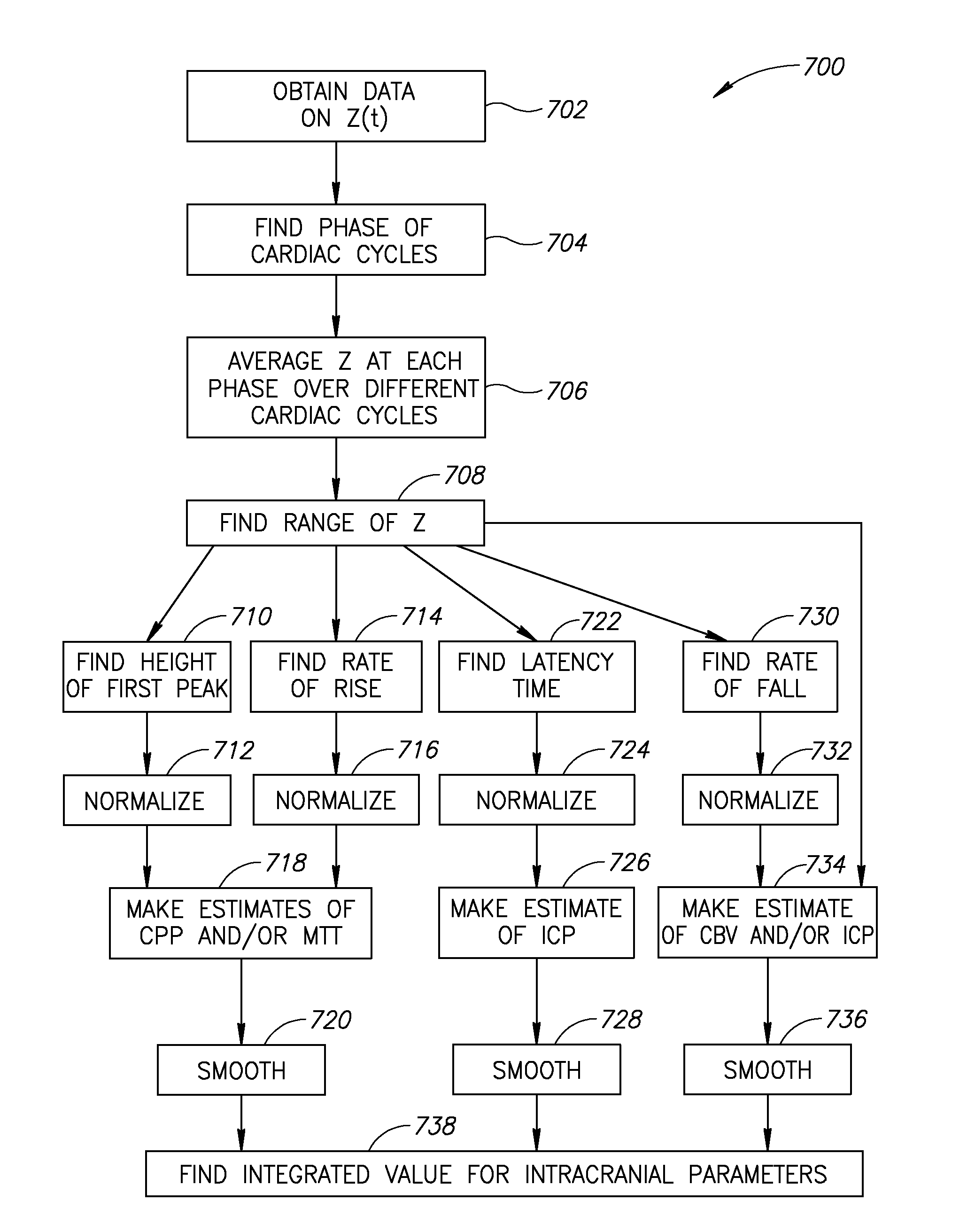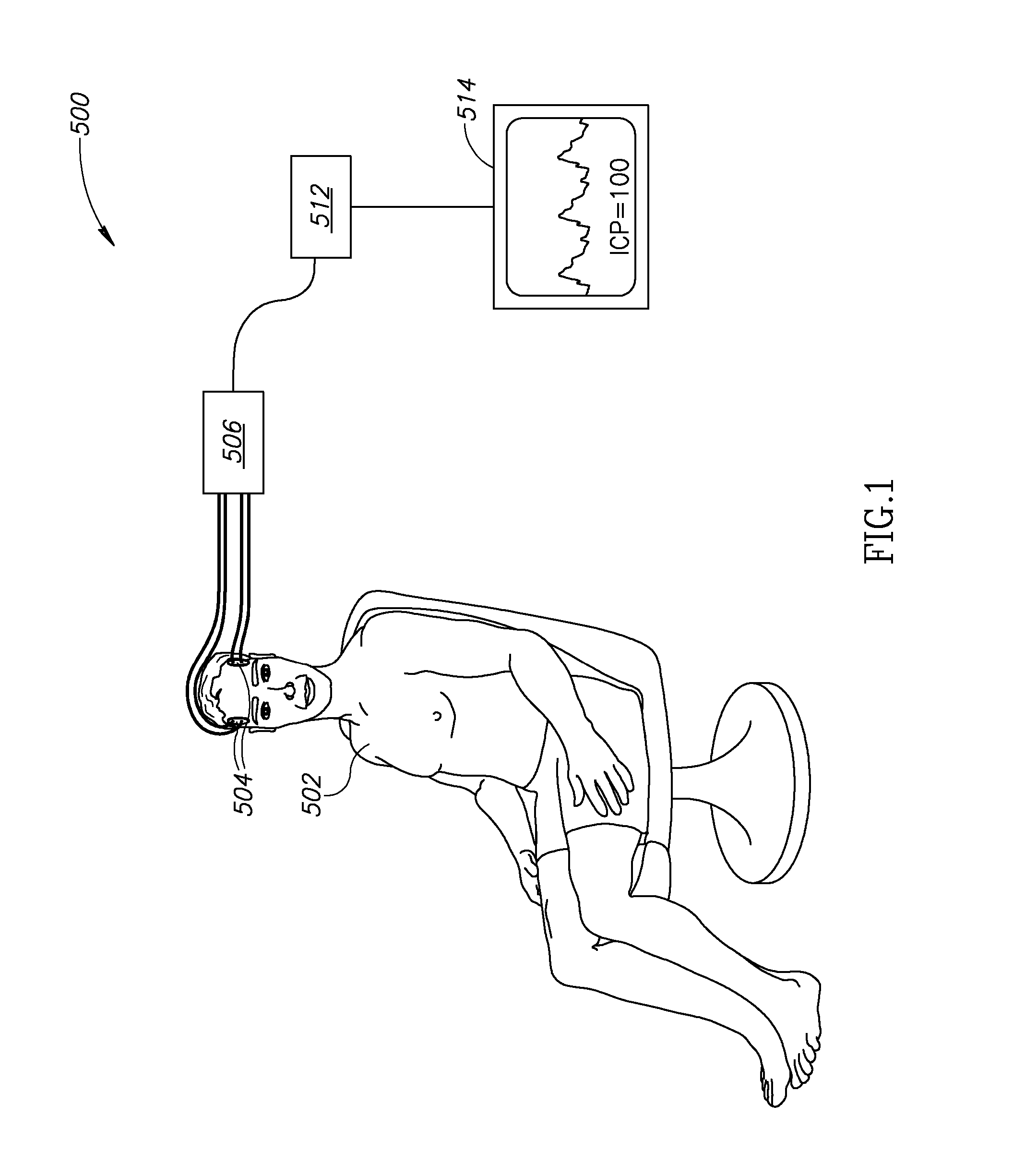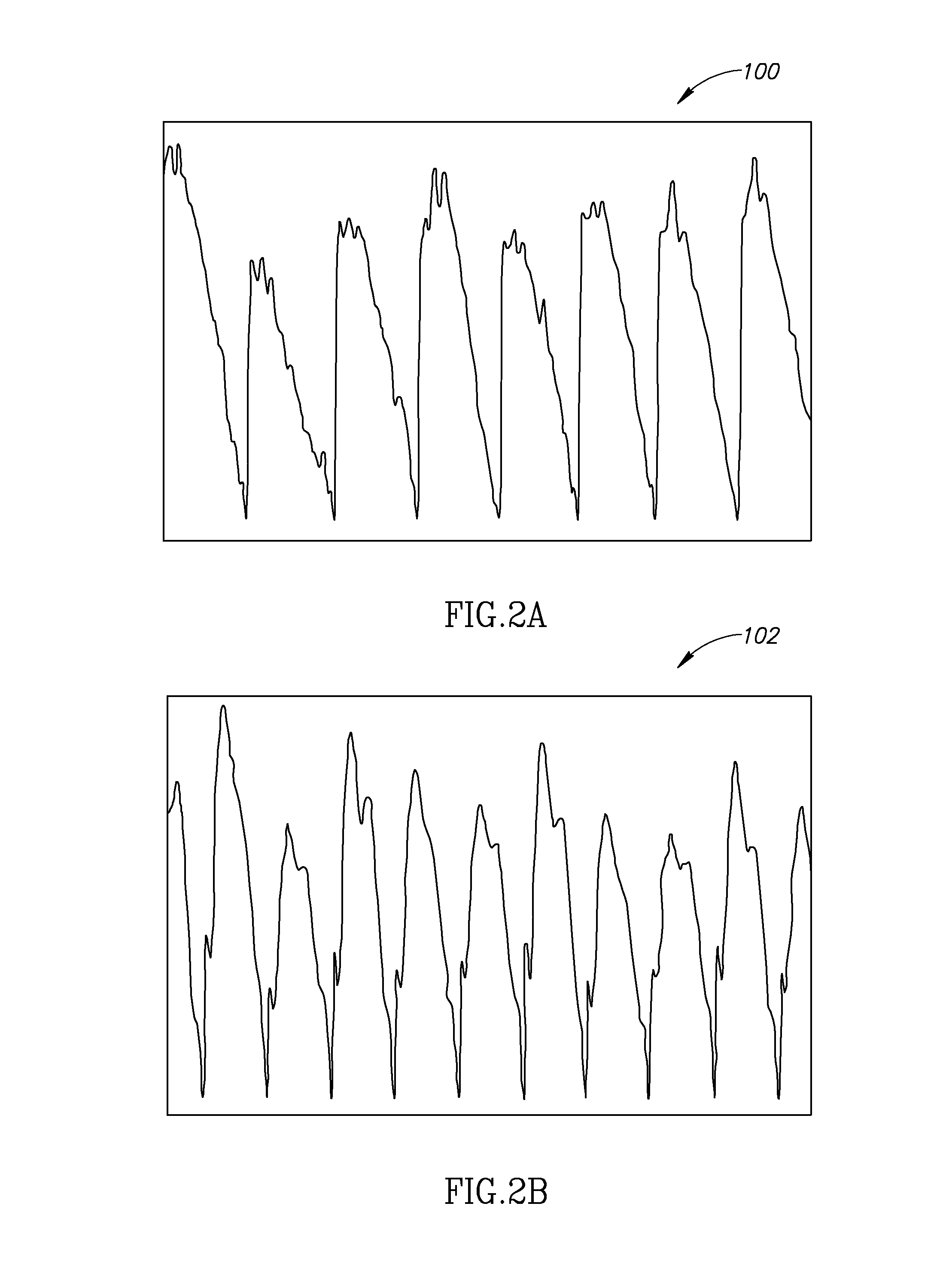Non-invasive intracranial monitor
a monitor and non-invasive technology, applied in the field of intracranial parameters estimation, can solve the problems of poor maintenance of a reference point with an external transducer, method danger, fluid obstruction, etc., and achieve the effect of reducing cpp, low cpp, and low cpp
- Summary
- Abstract
- Description
- Claims
- Application Information
AI Technical Summary
Benefits of technology
Problems solved by technology
Method used
Image
Examples
Embodiment Construction
[0065]FIG. 1 schematically shows a system 500 for estimating one or more intracranial parameters in a subject 502, using bio-impedance measurements of the subject's head, according to an exemplary embodiment of the invention. A system controller 512, for example a computer, uses data of the impedance measurements to estimate the intracranial parameters, and outputs the result, for example by displaying it on a monitor 514.
[0066]Electrodes 504 are placed on the subject's head in order to measure the impedance of the head. Electrodes 504 may use any design for bio-impedance electrodes known to the art, including the designs described in WO 06 / 006143 and WO 06 / 011128 to Shapira et al, and US 2005 / 0054939 and WO 03 / 059164 to Ben-Ari et al. For example, there may be separate current and voltage electrodes. Although FIG. 1 only shows two electrodes 504, there may be more than two electrodes. The electrodes may be placed on the head at any of the locations suggested in the prior art for bi...
PUM
 Login to View More
Login to View More Abstract
Description
Claims
Application Information
 Login to View More
Login to View More - R&D
- Intellectual Property
- Life Sciences
- Materials
- Tech Scout
- Unparalleled Data Quality
- Higher Quality Content
- 60% Fewer Hallucinations
Browse by: Latest US Patents, China's latest patents, Technical Efficacy Thesaurus, Application Domain, Technology Topic, Popular Technical Reports.
© 2025 PatSnap. All rights reserved.Legal|Privacy policy|Modern Slavery Act Transparency Statement|Sitemap|About US| Contact US: help@patsnap.com



